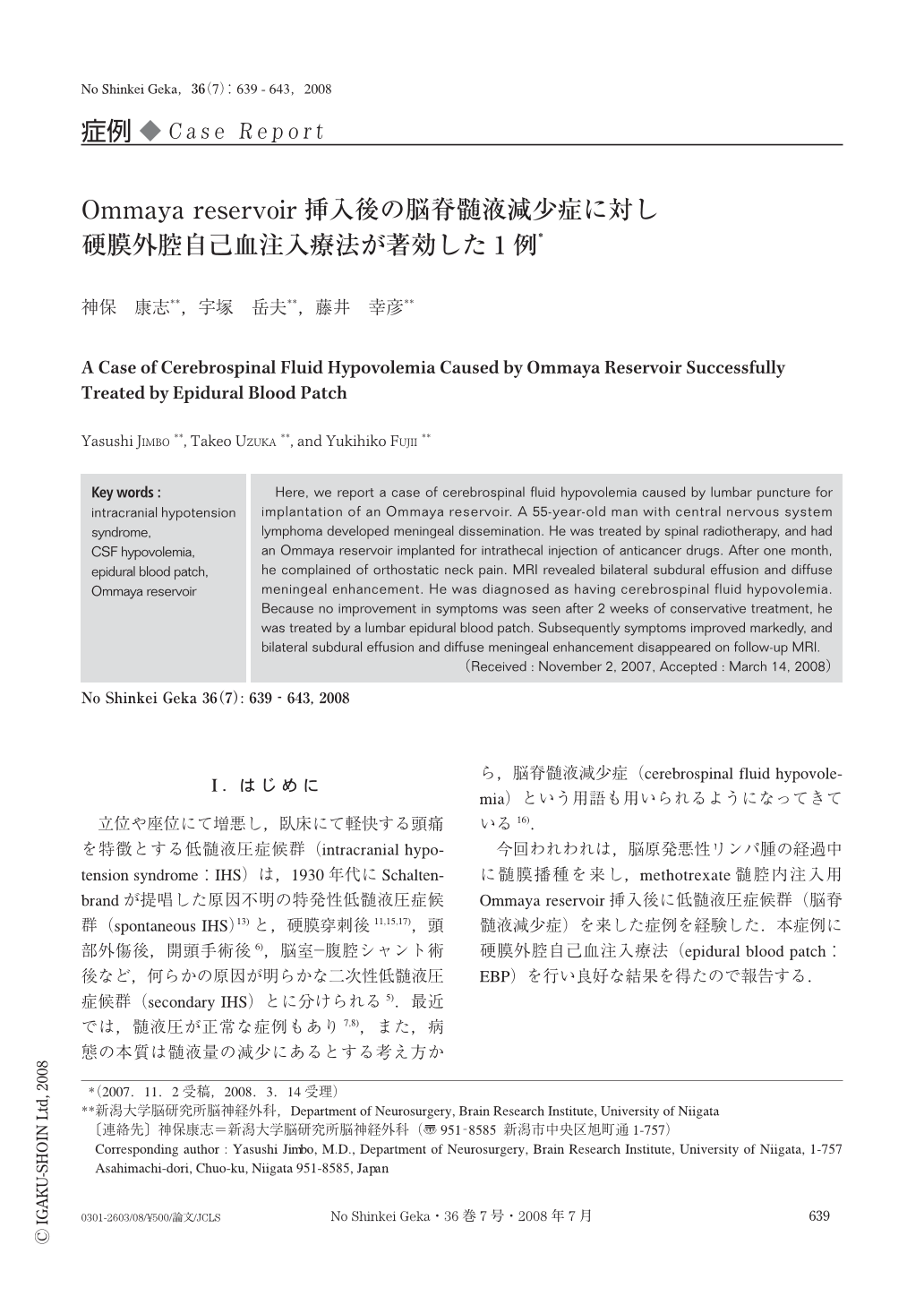Japanese
English
- 有料閲覧
- Abstract 文献概要
- 1ページ目 Look Inside
- 参考文献 Reference
Ⅰ.はじめに
立位や座位にて増悪し,臥床にて軽快する頭痛を特徴とする低髄液圧症候群(intracranial hypotension syndrome:IHS)は,1930年代にSchaltenbrandが提唱した原因不明の特発性低髄液圧症候群(spontaneous IHS)13)と,硬膜穿刺後11,15,17),頭部外傷後,開頭手術後6),脳室-腹腔シャント術後など,何らかの原因が明らかな二次性低髄液圧症候群(secondary IHS)とに分けられる5).最近では,髄液圧が正常な症例もあり7,8),また,病態の本質は髄液量の減少にあるとする考え方から,脳脊髄液減少症(cerebrospinal fluid hypovolemia)という用語も用いられるようになってきている16).
今回われわれは,脳原発悪性リンパ腫の経過中に髄膜播種を来し,methotrexate髄腔内注入用Ommaya reservoir挿入後に低髄液圧症候群(脳脊髄液減少症)を来した症例を経験した.本症例に硬膜外腔自己血注入療法(epidural blood patch:EBP)を行い良好な結果を得たので報告する.
Here, we report a case of cerebrospinal fluid hypovolemia caused by lumbar puncture for implantation of an Ommaya reservoir. A 55-year-old man with central nervous system lymphoma developed meningeal dissemination. He was treated by spinal radiotherapy, and had an Ommaya reservoir implanted for intrathecal injection of anticancer drugs. After one month, he complained of orthostatic neck pain. MRI revealed bilateral subdural effusion and diffuse meningeal enhancement. He was diagnosed as having cerebrospinal fluid hypovolemia. Because no improvement in symptoms was seen after 2 weeks of conservative treatment, he was treated by a lumbar epidural blood patch. Subsequently symptoms improved markedly, and bilateral subdural effusion and diffuse meningeal enhancement disappeared on follow-up MRI.

Copyright © 2008, Igaku-Shoin Ltd. All rights reserved.


